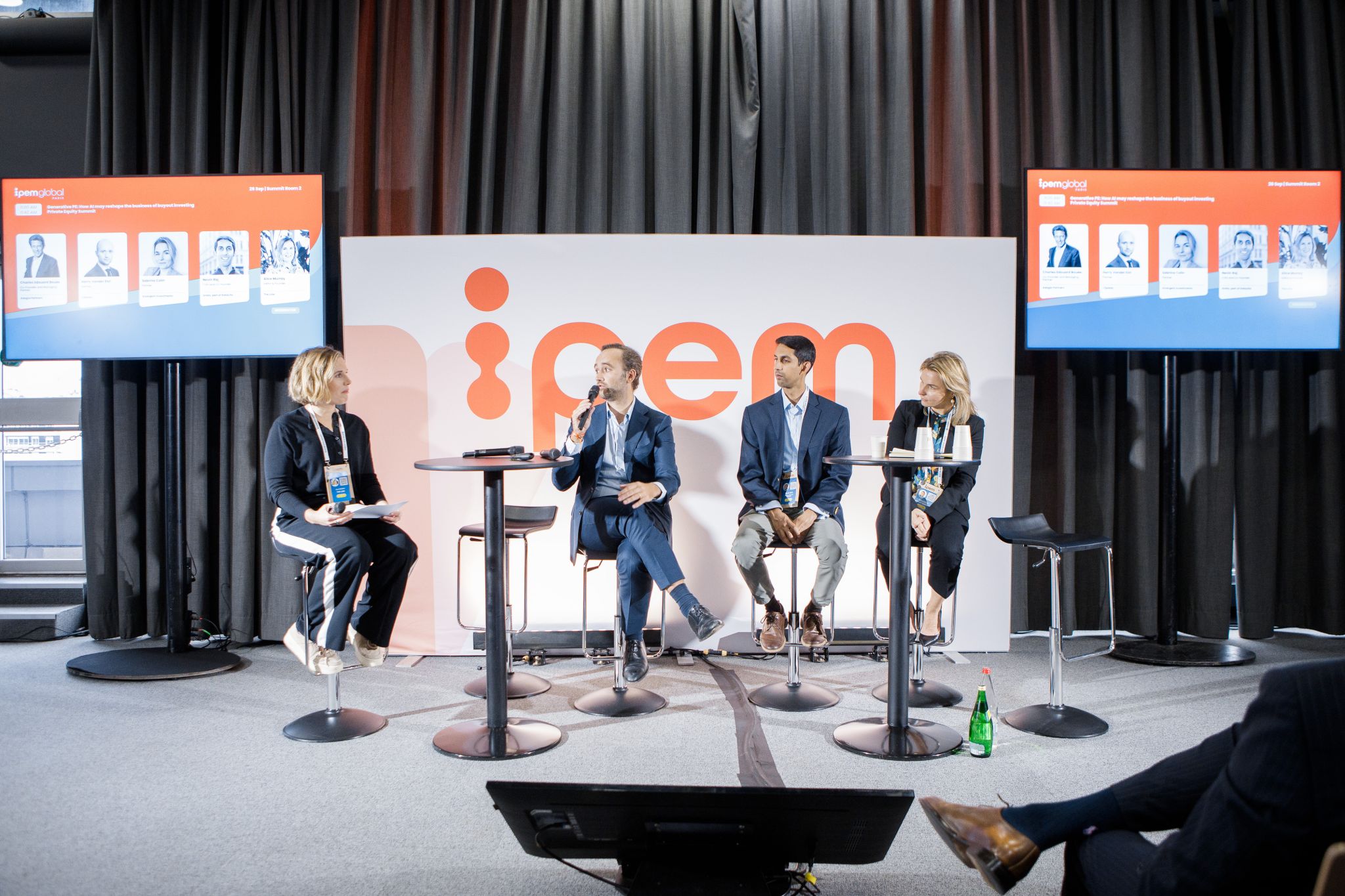The M&A industry is at an inflection point. AI has evolved from a side experiment to a core value-driver across the investment lifecycle.
As a result, the conversation about AI in M&A has shifted from curiosity to implementation. “Close to 100% of conversations today involve talking about how AI is used in firms,” said Nevin Raj, co-founder and COO of Grata.

Nevin Raj recently joined Alice Murray, Charles-Edouard Bouée, Sabrina Colin, and Harry Vander Elst at IPEM to discuss how AI is reshaping the business of buyout investing.
Here’s what you need to know.
1. AI is at its best when layered with proprietary data
A general-purpose AI model is like a bright but inexperienced intern — it’s capable, but it needs training and direction. The real edge in private equity isn’t the data itself, but how firms use the data to get ahead of deals and deepen relationships.
Tasks that once required manually scraping PDFs and importing data into Excel are now automated, freeing up teams for higher-value activities. One IPEM panelist described how their firm uses its own internal AI software throughout the investment process to improve data sourcing and value creation. Another panelist highlighted their firm’s proprietary model, “TESS,” which runs due diligence and automates data hierarchies.
Though every firm has a unique thesis, 90–99% of them rely on the same 10–20 private company data points: management team, financial profile, growth profile, ownership, cap table, funding, and so on. More accurate and reliable data leads to more advanced and effective AI.
The winning firms are those with strong internal data governance that can merge proprietary data with external market data for a holistic view.
2. Data migration and cultural barriers may pose challenges
Migrating data to new systems can be one of the biggest hurdles for firms adopting AI. Compliance and IT concerns about maintenance, risk, and data loss can slow adoption. Some firms have sidestepped this altogether by building their own AI tools from scratch to avoid migration challenges.
Equally important is workplace culture. AI adoption succeeds where there’s a unified vision. One panelist noted that their team, which is composed of professionals who left previous roles to build something new, was better positioned to adopt an AI-first model.
Some AI-averse analysts are committed to Excel, believing their proficiency in the program is tied to their market value as an employee. But as AI adoption continues, program-specific knowledge will lose competitive edge in favor for those who embrace AI.

3. Soft skills are becoming more important
As AI automates data extraction and processing, the role of the investment analyst is shifting. Analysts who once cornered the market as “Excel heroes” are giving way to those who prioritize interpersonal skills and relationships.
With more time freed from manual work, analysts can deepen their understanding of companies, value creation drivers, sustainability, and risk assessment. Soft skills like communication, relationship-building, and strategic thinking are becoming more important.
Additionally, AI is pushing modeling and analysis farther up the firm career ladder, with senior-level professionals increasingly using the tech for modeling and analysis. This could alter the talent pool for future partners as fewer analysts cut their teeth on manual tasks and legacy programs.
4. Agentic AI is the future
The next frontier in PE is agentic AI: autonomous systems capable of performing complex, multi-step tasks like deal sourcing and due diligence with minimal human intervention. One IPEM panelist likened an AI agent to an “autonomous employee or intern” that can perform entire workflows.
Early adopters have already deployed AI agents in deal sourcing and due diligence, and the pace will only continue to quicken as widespread adoption is on the horizon. Firms that fail to adopt AI risk falling behind their peers.
Still, the AI differentiation comes from people; though firms may use similar tools, their proprietary data, workflows, and human judgment yield different results. To gain a true advantage, firms must use their own proprietary data to train their models.
The next step for agentic AI will be seen in how the technology can work in tandem with data for more enriched analysis. By allowing users to modify AI-generated assumptions, a firm can codify its institutional knowledge. The system learns from the team's expertise, turning an unsupervised problem into a supervised one.

Drive Value with an AI-first tech stack
Grata, Blueflame AI, and Datasite are redefining the M&A technology landscape. Together, we’re eliminating workflow bottlenecks and unlocking seamless access to investment-grade insights on over 19 million private market companies — powered by cutting-edge AI and unmatched data quality.
Discover smarter opportunities, evaluate deals with precision, and reach key decision-makers faster than ever.
Want to learn more? Schedule a demo with Grata to get started.











